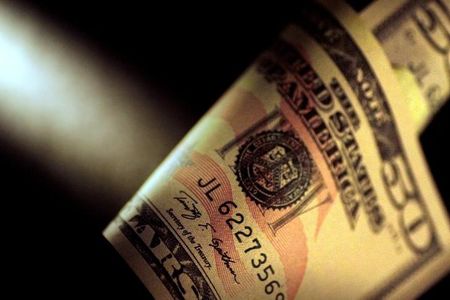Forex
Dollar gains on hawkish Fed; sterling weakens after BOE meeting

Investing.com – The U.S. dollar rose Friday to new highs with the Federal Reserve sounding more hawkish than its European peers, while sterling continued to retreat.
At 05:00 ET (09:00 GMT), the Dollar Index, which tracks the greenback against a basket of six other currencies, traded 0.1% higher at 105.365, not far removed from last week’s one-month top of 105.80.
Dollar supported by relatively hawkish Fed
The U.S. currency has been in demand even with data pointing to a slowing economy.
The latest numbers on the housing and labor markets were soft, and the upcoming data, due later in the session, are expected to show a slowing in activity.
However, Fed officials continue to call for caution and more data before agreeing to cut interest rates, and the last meeting of the U.S. central bank saw the forecast of rate reductions this year cut to one from three previously.
By contrast, the started cutting interest rates earlier this month, the has reduced rates twice, and the looks poised to start trimming rates in August.
“The surprise rate cut by the Swiss National Bank and a dovish hold by the Bank of England reinforced the notion that central banks in Europe are way ahead of the Federal Reserve with rate cuts, a dollar-positive development,” said analysts at ING, in a note.
Sterling weakens as August cut looms
fell 0.1% to 1.2652, with sterling close to a five-week low in the wake of the Bank of England’s latest policy meeting.
The BoE kept rates on hold, but some policy makers said the decision not to cut was “finely balanced”, raising expectations that policymakers will agree to a cut when they next meet at the start of August.
The pound has been supported to a certain degree Friday by data showing British jumped sharply last month after heavy rain kept shoppers away in April. Sales volumes rose 2.9% in May, up from a revised 1.8% fall in April.
fell 0.1% to 1.0692, after falling around 0.4% during the previous session with weak economic data added to the region’s political worries.
Eurozone business growth slowed sharply this month, with the bloc’s industry showing some signs of weakening while the downturn in took a turn for the worse.
The region’s preliminary , compiled by S&P Global, sank to 50.8 this month from May’s 52.2, confounding expectations in a Reuters poll for a rise to 52.5.
“With dovish signals from the European Central Bank’s major European counterparts (the BoE and SNB) and investors’ nerves still quite jittery on EU fiscal and political developments, the euro is understandably under some pressure in the latter half of this week,” ING added.
Yen falls to eight-week low
In Asia, traded 0.1% lower to 158.81, with the pair slipping a little after earlier climbing to a fresh eight-week high above 159.
The Japanese currency has remained on the back foot after the Bank of Japan’s decision last week to hold off on reducing bond buying stimulus until its July meeting.
The U.S. Treasury on Thursday added Japan to a list of countries it is monitoring for potential labelling as a currency manipulator, in the wake of the BOJ intervening heavily to support the yen as it sank to a 34-year low.
traded edged higher at 7.2611, with the Chinese yuan remaining under pressure amid doubts about the strength of the country’s economic recovery.

 Forex3 years ago
Forex3 years agoForex Today: the dollar is gaining strength amid gloomy sentiment at the start of the Fed’s week

 Forex3 years ago
Forex3 years agoUnbiased review of Pocket Option broker

 Forex3 years ago
Forex3 years agoDollar to pound sterling exchange rate today: Pound plummeted to its lowest since 1985

 Forex3 years ago
Forex3 years agoHow is the Australian dollar doing today?

 Cryptocurrency3 years ago
Cryptocurrency3 years agoWhat happened in the crypto market – current events today

 World3 years ago
World3 years agoWhy are modern video games an art form?

 Commodities3 years ago
Commodities3 years agoCopper continues to fall in price on expectations of lower demand in China

 Economy3 years ago
Economy3 years agoCrude oil tankers double in price due to EU anti-Russian sanctions


























